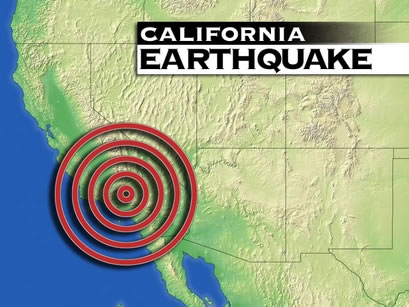Strengthening California hospitals against another major earthquake

California’s program to strengthen hospitals at risk of severe damage in a future earthquake would get an overhaul under legislation on the desk of Gov. Arnold Schwarzenegger. The measure is the latest in a line of legislation dating back to 1973 attempting to ensure hospitals withstand the jolt of a major quake. There is a 62 percent probability of at least one 6.7 magnitude or greater quake striking the San Francisco Bay Area before 2032. Southern California has a 60 percent probability of a major quake during the same period, the state notes.
Nearly 40 years after the first bill requiring hospitals to reinforce, 721 out of 2,670 buildings at 416 facilities across the state are judged to be at risk of collapse or significant loss of life in a major earthquake, according to data from the Office of Statewide Planning and Development, which oversees hospital seismic safety. “(This bill) attempts to balance acute care with seismic safety in our hospitals and the need to keep hospitals open in our communities,” said Sen. Denise Ducheny, a San Diego Democrat who carried the bill, in convincing her fellow senators to vote for the measure. The 40-member Senate sent her bill, SB 289, to the GOP governor on August 30 with a bipartisan 33-2 vote. Schwarzenegger has until September 30 to act on it.
Ducheny’s bill, supported by the California Hospital Association and opposed by the California Nurses Association, makes several key changes to the seismic strengthening program. Chief among them is allowing a reassessment of the risk of collapse of hospital buildings using a new assessment technology. The aim is that the reassessment could save hospitals money – estimates of replacing or retrofitting all susceptible buildings range from $45 billion to $110 billion – and better prioritize those buildings most in need of replacement or strengthening. Hospitals were placed on a timetable to strengthen themselves – at their own expense – against future earthquakes after the 1994 Northridge earthquake in Los Angeles when 11 hospitals were damaged – two severely -- or became unusable after the temblor because of pipe ruptures or other internal failures.
That law, SB 1953, required acute care hospitals to reinforce themselves by 2008 or stop being acute care hospitals. A 2000 bill granted some qualifying hospitals a five-year extension to 2013. Six years later, another bill allowed hospitals that had made substantial progress in seismically strengthening their buildings or were involved in major construction to receive an additional two-year extension to 2015. Ducheny’s bill allows up to a three-year extension – until 2016 – for hospital projects, such as Stanford Hospital, mired in a local planning or land use process. County or city hospitals have until 2020 to comply if they can’t meet the 2013 deadline. But in order to get the extension, the local government must replace the existing structures. By 2030, all hospital buildings must be able to withstand a major earthquake or be demolished, replaced, or no longer offer acute care.
In 1994, when the initial list of vulnerable structures was developed, the software used was less sophisticated. It did not consider proximity to a fault line, for example, so a hospital campus in seismically inactive Sacramento could be just as likely to judged as in peril as one in Oakland or San Francisco. Since 2008, the state has used software known as HAZUS, developed initially by the Federal Emergency Management Agency, to determine a building’s danger of collapse. Of 387 buildings that hospitals requested HAZUS assessment in 2008, 289 fell from the most at risk list – Structural Performance Category 1 – to Structural Performance Category 2, buildings whose damage from an earthquake won’t “significantly jeopardize” lives but may cause the building to not be repairable after a major temblor. Buildings in the most dangerous category have just over a one in a 100 chance of collapse in a major quake. Hospitals have until 2030 to replace the second tier buildings or close their doors.
“This software is much more accurate and much more precise,” said Jan Emerson, a spokeswoman for the hospital association. “Many buildings that were thought to be at risk of collapse using the old software are being found not to be as much at risk.”
The result, Emerson says, is that now the state can “narrow in and allow people to put the focus on the buildings most at-risk.” Hospitals have long complained about this “unfunded mandate,” citing a 2007 RAND study that calculated the costs of meeting the requirement as ranging from $45 billion to $110 billion. Emerson notes that while an improvement over the status quo, Ducheny’s bill does not address how hospitals will finance the construction projects, particularly after a recession that sharply curtailed credit and lending. "Even hospitals with money can’t afford to do everything that’s required. At some point, there has to be a discussion of financial assistance.”
Opponents of Ducheny’s bill argue that it simply is another postponement of the day of reckoning, imperiling both patients and hospital personnel. “Nurses and other health care workers are at the front lines when devastation occurs,” said Malinda Markowitz, co-president of the California Nurses Association in an August 17 statement opposing Ducheny’s bill.
“As Haiti, Chile and the earthquakes in California should signal, the one building that Californians will most need standing following a serious earthquake is their community’s acute care hospital.”
Hospitals have made progress. Their evaluation in 2001 showed that 40 percent of the state’s hospital buildings were at risk of collapse in a major quake. The 721 buildings on the state’s list represent 27 percent of the state’s hospital buildings. Buildings in need of strengthening are in 41 of the state’s 58 counties. The greatest number of at risk buildings – 270 – is in Los Angeles County. Some hospitals have multiple buildings in need of reinforcement. The state shows the Kaiser Foundation Hospital Oakland Campus with 12 buildings at risk of collapse. The Ronald Reagan University of California at Los Angeles Medical Center has 15, as of August 26. Under Ducheny’s bill, prior to 2020, hospitals must submit a master plan for the buildings they intend to rebuild or replace by 2030 – the first time such a requirement has been imposed. Buyers of hospitals that aren’t earthquake safe must give the state a plan on how they’re going to strengthen them. The measure also requires hospitals that do not meet the state’s seismic standards to post a sign at all public entrances saying this: “The State of California has determined that this hospital has buildings that are at risk of collapse in a major earthquake.”
California hospitals say, as Ducheny does, that the bill attempts to strike a balance between the need to keep hospitals open and to buttress them against future earthquakes. But Emerson says because hospitals have been mandated to improve their ability to stand up to earthquakes since 1973, they are already safer than any other type of building rocked by an earthquake. “Should hospital buildings be safer because of the people that go in there? Of course but they’re far less likely to collapse than a grocery store.”
Given the bipartisan support, it's probable that Schwarzenegger will sign the measure, although he has taken no public position on it.




